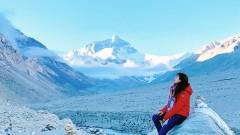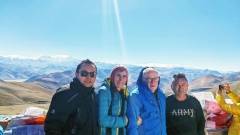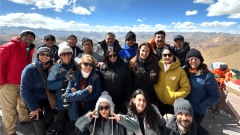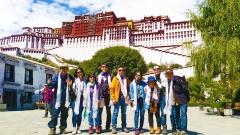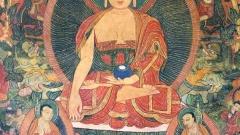Tibet is not just a place on the map: for many Buddhists it’s a living pilgrimage. Ancient lineages, unique rituals, and monasteries that have been centers of learning for centuries make the plateau a deeply rewarding destination. Below I walk you through the most important monasteries in the Tibet Autonomous Region (and a few essential nearby sites), explain why they matter to Buddhist practice, and give practical travel and etiquette tips so your visit is meaningful and respectful.
Why these monasteries matter
Tibetan Buddhism is made of several major schools (Gelug, Nyingma, Kagyu, Sakya, and Bon traditions with their own sacred sites). Visiting monasteries in Tibet is both devotional and educational: you’ll see living rituals (pujas, butter-lamp offerings, monastic debate), encounter thangka painting and ritual music, and stand before relics and statues venerated for centuries. Some sites are primarily pilgrimage destinations (Jokhang, Samye), others are monastic universities and debate halls (Drepung, Sera), and some combine spectacular setting with intense devotion (Rongbuk at Everest).
Key monasteries and what to expect
Jokhang Temple — Lhasa: the spiritual heart
Situated in the middle of old Lhasa and encircled by the Barkhor kora, Jokhang houses the Jowo Shakyamuni (the most sacred statue for many Tibetans). Pilgrims stream around the temple day and night, prostrating, spinning prayer wheels, and offering butter lamps. For a Buddhist pilgrim, Jokhang is where many journeys begin — spend time in quiet prayer, join the kora, and observe ritual timings (morning and late afternoon are busiest and most powerful). Note: inner halls have photography restrictions.
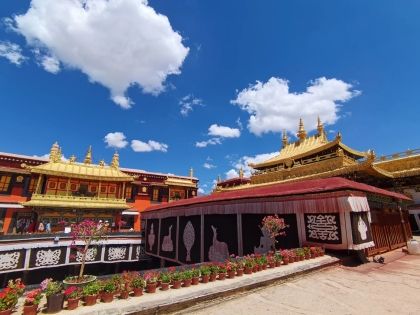
Jokhang Temple
Potala Palace — Lhasa: the historic seat of Tibetan governance and faith
While Potala is a palace complex rather than a monastery in the narrow sense, it was the Dalai Lamas’ seat and contains chapels, stupas and sacred art. Devotees come to circumambulate the base; others visit to see the stupas and relics. Tickets are timed and limited, so book ahead and allocate 2–3 hours for the visit (plus acclimatization time).
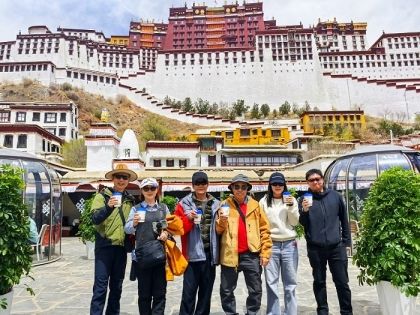
Drepung & Sera Monastic Universities — Lhasa: study, debate and practice
These two great Gelug universities were once the world’s largest monastic institutions. Arrive in the afternoon at Sera to watch the vigorous, theatrical monk debates — an excellent way to see how study and reasoning remain central to Tibetan practice. Drepung (closer to Lhasa) has large assembly halls and historical chapels; both are living universities where you can quietly observe study, pujas, and the monastic schedule.
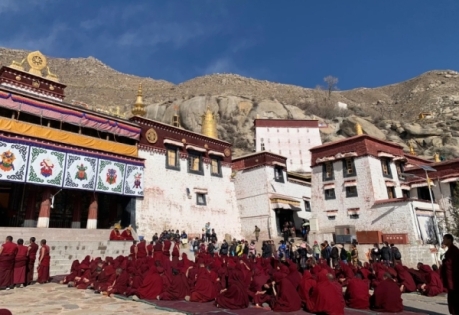
Sera Monastery
Tashilhunpo Monastery — Shigatse: the Panchen Lama’s seat
In Shigatse, Tashilhunpo is the seat of the Panchen Lamas and a major Gelug monastery. It’s famous for its huge Maitreya Buddha statue and colorful chapel art. A visit helps place Lhasa’s Potala in regional context and reveals the diversity of Tibetan monastic life beyond the capital.

Tashilhunpo Monastery
Samye Monastery — Yarlung Valley: Tibet’s first monastery
Founded in the 8th–9th century, Samye is considered Tibet’s first Buddhist monastery and was built during the initial translation and systematization of Buddhist teachings in Tibet. Its architecture is symbolic (a mandala of the universe) and it’s an essential stop for anyone interested in the roots of Tibetan Buddhism and early tantric practice.
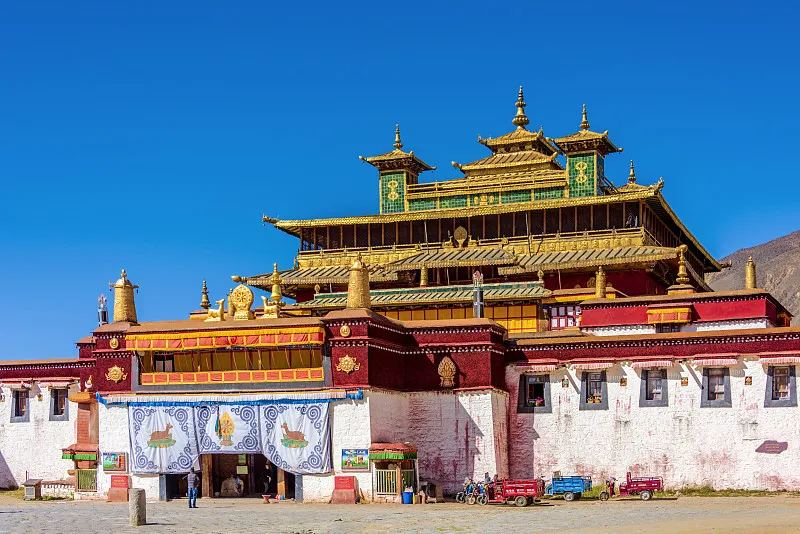
Shannan Samye Temple
Ganden Monastery — east of Lhasa: the Gelug founding site
Founded by Je Tsongkhapa, the founder of the Gelug school, Ganden crowns a ridge with sweeping views. Pilgrims perform kora around the monastery and up to the nearby hermit caves. Note: access may be limited in winter and it sits higher than Lhasa, so acclimatize first.
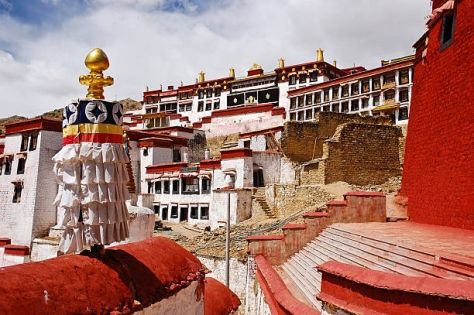
Ganden Monastery
Rongbuk Monastery — Everest region: high mountain devotion
Rongbuk is one of the world’s highest monasteries (approaching 5,000 m) and serves both as a pilgrimage site and a place of silent contemplation with Everest as backdrop. For many pilgrims, Rongbuk’s remote chapel and vista make it a powerful place for practice and reflection.
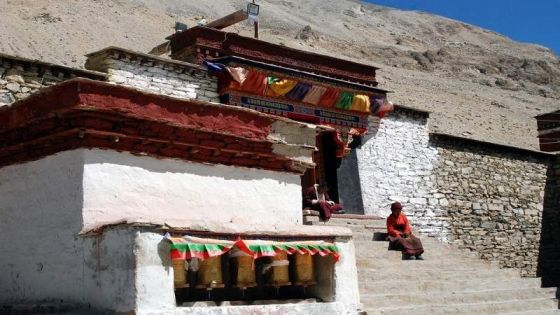
Rongbuk Monastery
Pelkor Chode & Kumbum (Gyantse): Sakya and tantric art
Gyantse’s Kumbum (the multi-tiered stupa) and surrounding Pelkor Chode monastery present rare mural cycles, tantric chapels and a lively local devotional life. The Kumbum’s chapels are organized for progressive ritual study — a fascinating place to see tantric iconography and local rites.
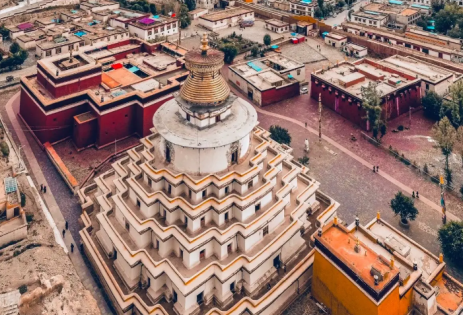
Pelkor Chode monastery
Yungbulakang Palace & Tsetang area — early Tibetan sites
Near Tsetang (Yarlung Valley), Yungbulakang Palace and nearby early temples connect visitors to the formative era of Tibetan kings and the early transmission of Buddhism into Tibet. Combine a visit to Samye and the valley sites for historical depth.
Practical & safety notes for Buddhist visitors
-
Permits & logistics: Foreign travelers need a Tibet Travel Permit and must travel with a licensed tour operator. Some regions require additional permits. Arrange these well in advance.
-
Altitude & health: Many temples sit high (Lhasa ~3,650 m). Allow 1–2 days in Lhasa to acclimatize; avoid heavy exertion early on. If you have heart or respiratory conditions, consult your doctor.
-
Timing & crowds: High season (May–Oct) has good weather but more visitors. For quieter devotional experiences, consider shoulder seasons (late spring, early autumn). Jokhang and Potala often impose visitor limits—book ahead.
-
Dress & conduct: Modest clothing is expected in temples (cover shoulders and knees). Remove hats, keep voices low, and follow local norms (walk clockwise around stupas, spin prayer wheels with right hand). Ask before photographing monks or prostrating pilgrims.
-
Offerings & donations: Small donations, butter-lamp offerings or incense are welcomed; learn the local method (e.g., placing money into offering boxes). Avoid throwing coins or rubbish.
-
Photography: Many inner sanctums prohibit photography. If allowed, never use flash on statues or murals (it damages pigments), and be discreet with intimate ritual moments.
-
Language & learning: A few Tibetan phrases (tashi delek — greetings; nang gi gen — thank you) go far. If possible, attend a short teaching, puja, or monk debate — many monasteries welcome sincere visitors who ask respectfully.
How much time to allocate
-
Lhasa (Jokhang, Potala, Drepung, Sera, Norbulingka): 3–4 days minimum to absorb the spiritual rhythm.
-
Shigatse (Tashilhunpo): 1 day.
-
Gyantse & Kumbum: 1 day (often en route between Lhasa and Shigatse).
-
Samye & Yarlung Valley: 1–2 days.
-
Rongbuk / Everest approach: add 2–3 days for the journey and acclimatization.
A final word on pilgrimage spirit
For Buddhists, visiting Tibet’s monasteries is rarely a checklist—these are places for reflection, devotion, study and encounter. Move slowly. Allow silence. Sit through a morning puja, watch monks debate, walk a kora at dawn, and let the layered history — from palace politics to intimate offerings — inform your practice. Approach each site with reverence, curiosity, and humility, and the monasteries of Tibet will offer far more than monuments: they will offer living teachings.



